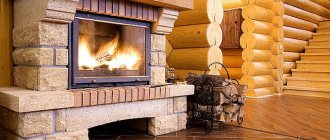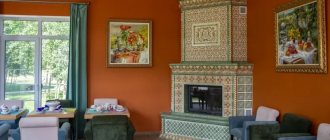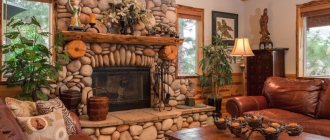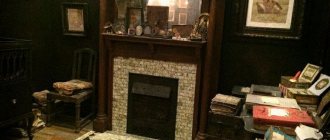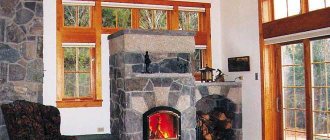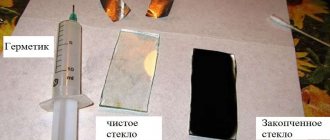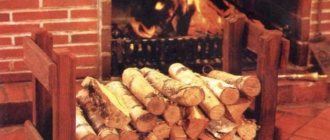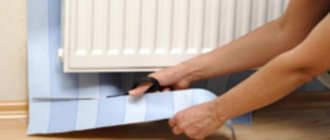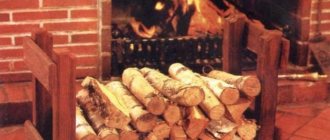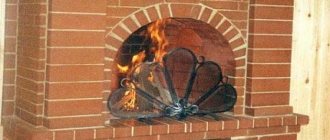In recent years, the fireplace has ceased to be an exclusively classic element of the interior. Modern biomodels are made of metal and glass, and they run on environmentally friendly fuel that does not produce smoke or soot. Fireplaces are becoming a central element in the design of living rooms, libraries, bedrooms and kitchens. They replaced the bulky stoves on which food was previously cooked. Depending on their location, fireplaces are classified into four types: island, corner, built-in and wall-mounted. The most material is spent on the first type, since the unit is installed in the middle of the room and has four walls. The most economical option in terms of cladding and decoration is considered to be a built-in model. In the classic configuration, the fireplace consists of a firebox, a smoke collector, a chimney and a portal. We are interested in the last component, since it is this that is decorated with stone decor, wood, inlay, and plaster. More modern models of electric fireplaces are a box without any communications. Thanks to this quality, they are used in the design of not only country houses, but also city apartments.
Decorating the fireplace with decorative stone returns the interior to its roots, that is, to the times when it was faced exclusively with natural, roughly processed materials. Such solutions are suitable not only for classic or ethnic styles. Modern loft, modern, Provence, Gothic go perfectly with stonework. It, in turn, is suitable for retro-style wallpaper and textured Venetian plaster. Natural stone has an impressive weight, and finishing is fraught with difficulties. There are now a number of high-quality imitations on the building materials market. Decorative stone for a fireplace is not inferior in characteristics to the original, and in some ways even surpasses it. In the article we will talk about how to choose a material from a variety of options and how to lay it correctly.
Features of facing a fireplace with artificial stone
This design method has many advantages:
- The material is suitable for fireplaces in any room.
- Not afraid of temperature fluctuations and strong humidity.
- Mechanical properties make it quite easy to work with.
- In terms of shape, texture, and strength, artificial stone is no worse than natural stone, although its cost is lower.
Cladding the fireplace with stone yourself will help reduce installation costs. This is not difficult due to its flexibility in processing. The artificial material does not require the installation of an additional foundation, since it is light in weight.
The main advantage is environmental friendliness. If you correctly decorate a fireplace with artificial stone with your own hands, a photo against its background will delight the owner for a long time.
English traditional
If you prefer the unchanging and always relevant classics, we recommend paying attention to the English fireplace in stone, which has the following distinctive features and advantages:
- It has high power, is capable of retaining and evenly distributing accumulated heat for a sufficiently long time. This installation, depending on its location and overall dimensions, can become the only source of heating in a large private house or country house;
- The stone fireplace stove has an original and universal design. The decor of such a heating device with artificial or natural stone is universal, which allows you to install such a heating unit in any interior (classic, retro, country, modern, Scandinavian);
- The design resembles a firebox or trapezoid in shape. Thanks to this type of construction, the side walls retain and distribute heat well;
- A stone fireplace stove has a bend angle reaching 20 degrees, which allows such an installation to operate on the principle of a mirror;
- Since the hearth is a traditional wood-burning fireplace, the structure gets very hot. In order to protect yourself and your property as much as possible, the combustion opening is additionally equipped with a special mesh or damper;
- For additional safety, the flooring near the fireplace must be lined and sealed with heat-resistant and fire-resistant materials, such as stone and porcelain stoneware.
Decorating the furnace unit yourself
Large island stove in country style
Surface cladding with natural stone
Surface cladding with natural stone
Tip: it is recommended to install fireplaces in a stone house in the center of the room or near the main load-bearing wall. This allows you to achieve the most productive, uniform, fast and high-quality heating.
You can view photos of finished English stone stoves and other models in this article.
Choosing artificial stone for facing a fireplace
The selection of material must be taken seriously. Not every type of stone is suitable for finishing a fireplace. Best examples:
- Terracotta has increased resistance to temperature changes. Since this stone is made of clay, the fireplace does not cool down for a long time.
- Majolica allows you to lay out beautiful decorative patterns.
- Clinker tiles are distinguished by their durability and environmental friendliness.
- Porcelain stoneware is more resistant to mechanical damage.
On a note!
To ensure that the stone lasts a long time, it is recommended to check the quality certificate for the product before purchasing. This is a guarantee of safety.
Preparing the fireplace surface for finishing
Surface preparation begins with proper processing. By skipping this step, the master risks ending up with a short-lived structure. It is necessary to wait for the walls of the structure to completely shrink and only then begin finishing. Failure to comply with this condition will lead to cracking of the cladding in the future.
Variations in surface preparation for laying cladding can be varied:
- The preparation of the shalevka board is carried out taking into account the moisture absorption of this natural material. To prevent dampness, it is necessary to apply a protective composition to the wood material; laying waterproofing is also possible.
- When plastering with concrete, a waterproofing layer is not needed.
- It is also possible to attach a metal frame.
For pre-plastering:
- A welded mesh with a cell of 10×10 mm is mounted on the surface to be finished with stone. It is attached to the brickwork using self-tapping screws with a wide head. For maximum reliability, it is recommended to close the caps with washers. The fasteners require horizontal intervals of 5 cm and vertical intervals of 15 cm. With the help of a mesh, the surface of the masonry becomes more even.
- The next step is applying plaster. The thickness of the layer that should be obtained is checked. The minimum allowable is 1 cm.
- When working with brickwork, the master marks the starting points for laying stone decorative elements. This is done to avoid installation errors.
- If the decoration of the fireplace includes shaped elements, a stronger solution is needed. It is necessary to choose a heat-resistant version of the mixture. One option would be a mixture of cement and fireclay or clay.
- Laying stone must begin from the corners. Before starting work, the surface is cleaned of dust with a vacuum cleaner, after which everything is primed.
On a note!
Surface primer is necessary for better bonding of the material to the surface.
Types of finishing materials
The following types of finishing materials are used for decorative finishing of fireplaces. These include:
Heat-resistant plaster. The composition uses fire-resistant components that can cope with sudden changes in temperature. Special pigments, which are combined with the building composition at the initial stages of finishing work, help to add bright colors.
Ceramic tile. This type of building material helps to achieve complex textured lines and add decorative details to the interior space.
Decorative rock. Most often, artificial stone covering elements are used for finishing work. It consists of polyurethane elements that are attached to a special adhesive. This artificial decoration of the fireplace is no different from natural materials.
Modern pigments and technologies help achieve complex color shades and depth of textured lines. All these elements will fit perfectly with the chosen stylistic direction.
Preparation of the solution
The solution is the most important element of the entire work. There are 3 options that are often used in work:
- Clay solution. Optimal for brick construction, withstands high temperatures when burning solid fuel. Will last a long time. An important characteristic is the fat content of the clay. The most primitive method of determining it is to check mechanical strength: roll balls from a composition with different ratios of sand and clay, dry completely, and drop each ball onto the floor. The one that will not break is taken as the basis for its composition. To ensure uniformity, the clay is passed through a sieve and kneaded by mixing with water. To achieve the required elasticity, sand and water are added. To mix the mixture, it is recommended to use a drill with a special attachment - this will ensure uniformity of the mass.
- Cement mortar. The composition is popular in use, but is afraid of prolonged thermal exposure - the seams may crack. For the solution, it is necessary to add sand, the amount depends on the brand of cement used. For example, for the M300 the ratio is 3:1. The solution is mixed using a drill. To avoid rapid shrinkage and to give elasticity to the solution, it is recommended to add a pinch of washing powder.
- Dry mixture. A ready-made purchase option, also suitable for finishing a decorative fireplace.
On a note!
It is better if the cladding is attached to the same mortar that was used for the main masonry.
Cost of finishing work
The price of finishing fireplaces directly depends on the type of finishing material and the area of the stone structure. As a rule, finishing with ceramic tiles costs much more than decorating with artificial stone.
Decorative plaster is considered a budget option. The cost of the construction composition depends on the components and special equipment that is used during the work process.
Solid fuel boilers - tips for choosing the best models and ideas for using boilers for heating (110 photos and videos)Screen for a heating radiator - a review of the best ideas and recommendations from designers for selecting screens for a heating system
- Chimneys for gas boilers - main types and step-by-step instructions for do-it-yourself installation (video + 100 photos)
Laying artificial stone
To ensure that the result matches your expectations as much as possible, it is better to listen to the advice of experienced professionals. Professionals give some installation recommendations:
- You need to start work from the corners of the structure. An important point is the alternation of parts of different lengths. It is necessary to secure the large elements of stones first. Such “beacons” will simplify further masonry.
- When laying the stone, it is better to adjust the size in advance; this will give the structure a natural and attractive appearance. This can be done using pliers or a hacksaw.
- Using a trowel, apply the selected solution to the material in a layer of about 1.5 cm, evenly over the entire surface.
- When applying it to the stone, you need to apply a little pressure, achieving alignment with the level or marks. This will allow not only to secure the element well, but also to completely fill all the cracks in the masonry.
- Press until the solution begins to squeeze out from the sides. When laying seamlessly, the side seams require special attention.
- It is also necessary to monitor the humidity of the room in which work is carried out. In a dry room, it is necessary to moisten both the fireplace and the stone with a wet brush or spray. If you don't have them on hand, you can put the stone in water for a couple of minutes.
- If the solution gets on the stone during the laying process, there is no need to remove it immediately. Let it dry a little, then it will be easier to remove the dry “drops”.
- The scheme of work is simple: first of all, you need to lay out all the elements in front of you. Alternating the type of material, its color, size will allow you to achieve originality of the future composition.
If there is unstitching, you need to start from the top. The finished design will be ideal for different masonry thicknesses.
On a note!
When finishing, it is important to observe the thickness of the seams and their location in the same plane.
It is better not to place horizontal seams one below the other. When laying without seams, installation should begin from the lower structure of the fireplace. In this case, you need to press harder on the stone elements to join them with each other. Control is also necessary for vertical seams, or more precisely, their intersection - it must be located strictly at a right angle.
Technology for installing tiles on the walls of the fireplace and exhaust pipe
From the variety of installation features inherent in each of the materials considered, some common features and rules can be identified:
- When starting the cladding, you should make a drawing on a scale of 1: 1, on which all the finishing details should be laid out. Inclined surfaces, using elementary techniques of descriptive geometry, should be depicted without distorting their linear dimensions.
- Measure the trim pieces and divide them according to size into three groups. Start the work with the most numerous.
- The masonry is laid without a seam or with a seam. To maintain the same width of the latter, plastic crosses are used, used by tile makers.
- The next row begins to be laid after checking the level of the previous row.
- Any solution that gets on the front side of the tile is wiped off with a damp cloth. Precisely wet, since using wet will lead to the absorption of the solution into the tile, which will change its color.
What else can you do to finish it?
Each fireplace is a unique product! It will be appropriate not only in the living room or recreation room, but also in the design of the kitchen or bathroom interior. Finishes can also be made from a wide range of materials. In addition to those considered, porcelain stoneware, tuff, and tiles are used. In imitation of a fireplace, if heating is not intended, it is permissible to use wallpaper and plastic. No mortar is required to secure them to the surface. It is enough to use construction adhesive.
